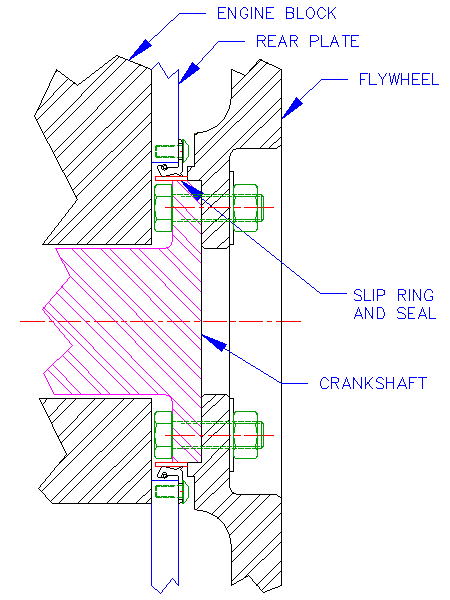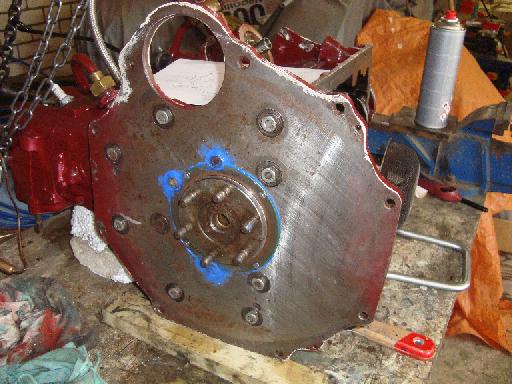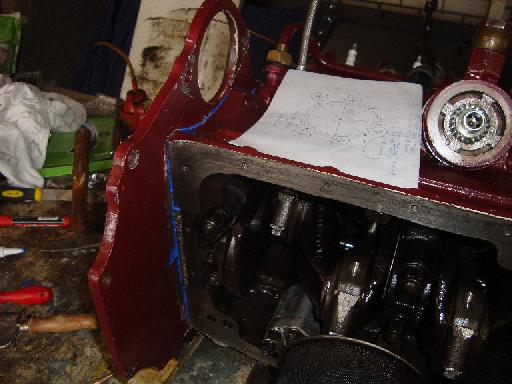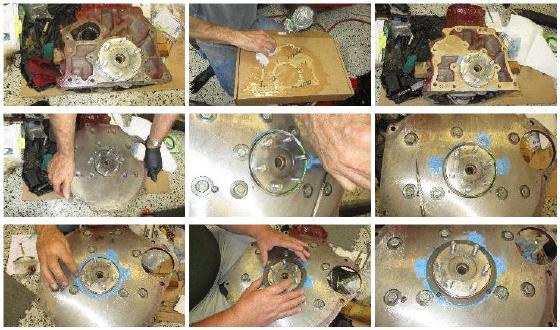The MGA With An Attitude
RUBBER REAR SEAL for Three Main Bearing Engine - CS-202E
The rear seal installation is in 5 steps spanning 5 web pages.
Click green arrow at bottom to follow pages in sequence.
A - Modify rear plate
B - Machine slip ring
C - Modify Viton seal
D - Modify bearing cap
E - Assembly - (this page)
F - Can I buy it?
G - Video Installation
H - Follow-up notes
Pictures here show the final installation of the parts. The slip ring can be installed on the crankshaft before the crank is installed in the block, or the ring can be installed without removing the crankshaft from the block. In the latter case it must be done while the rear plate is not on the block so that the small hole can be drilled and the little roll pin installed in the edge of the ring. The rear plate is then installed in the normal manner, being very careful not to bash the new polished slip ring in the process. Prior to installing the plate, you can trim the paper gasket back to match the new bore size in the plate. Also be sure to caulk up that shallow drain slot in the front face of the plate.
|
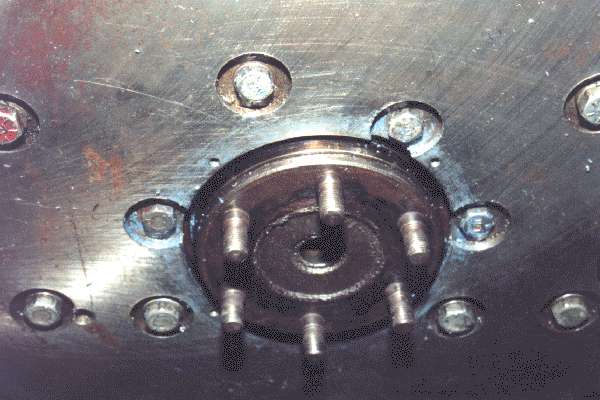
Slip ring, crankshaft and rear plate assembled with engine block.
Notice, no lockwashers on the three bolts closest to the crankshaft.
Secure these with thread lock adhesive.
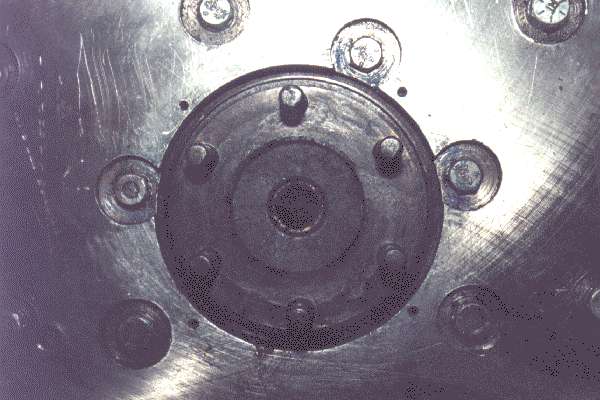
Straight on view of installed ring and rear plate.
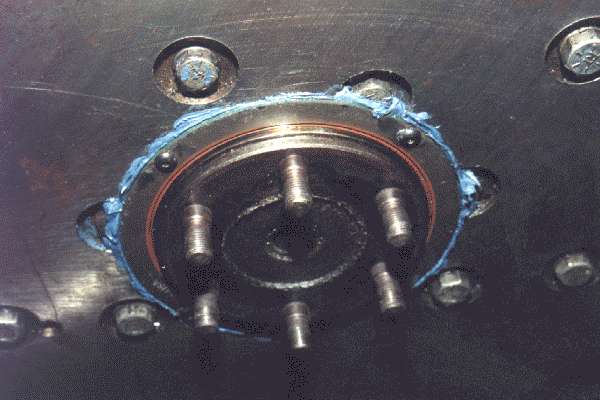
Finished seal installed and caulked and secured with the button head screws.
|
Here you use silicone rubber sealant to caulk the new seal in place. Start by filling the space between those three bolt heads and the counterbores with sealant, and then put a small bead of sealant around the edge of the large bore and across the tops of those three bolt heads. Go easy with the sealant here, don't just gob it on everything. The trick here is to NOT get sealant inside of the large bore where it would interfere with the flexibility of the new lip seal. I put the sealant around the periphery first, then go into the large bore with a small screwdriver or the back edge of a knife blade to clean out any sealant that might be overlapping into that large bore area. Be careful not to get any sealant on the polished slip ring. If you do get sealant where it doesn't belong, a little solvent on a small cotton swab may help clean it up.
|
Addendum October 2010:
Here's another idea contributed by Jim Juhas (racing at Lime Rock vintage festival) for application of the RTV silicone sealant around the three bolt heads. (Click for larger images).

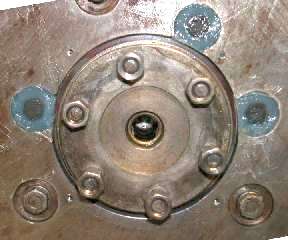
Install a temporary ring of thin plastic or card stock around the large hole in the rear plate, then fill the counter bores around the bolt heads with RTV. Once the RTV has set, remove the temporary rng. Then use minimal RTV caulking on the seal flange to back plate joint. This extra step is likely to help avoid the most common problem of slobbering caulk against the back of the seal lip.
|
|





